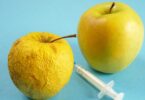An association reveals that a device designed to lift weights in factories helps patients move their limbs and can stimulate the damaged brain.
Estibaliz Zabalza (Pamplona, 1975) tells that his life was turned upside down when he suffered a stroke. He now has one more reason for hope: an exoskeleton for industrial use that, through a system of pulleys, allows him to expand the range of motion of his arms. It was initially designed to help factory workers with tasks such as lifting weights, but the Association for Acquired Brain Injury of Navarra (Adacen) has discovered that it can be useful in the rehabilitation of these patients.
Adacen is now studying the rehabilitative use of the exoskeleton with an ambitious goal in mind: that people who suffer from acquired brain damage may one day have an exoskeleton in their own home. The research is part of the Autonomía al Cuadrado project, financed by the Innova Social program of Fundación La Caixa and Caja Navarra.
The study began with 32 users and in January was limited to 10 people with whom individualized objectives are worked on, says Amaia Aguas, a rehabilitator at the entity.
The exoskeleton, in itself, is not a novelty in the health field. In its motorized version, it has been used for years to alleviate, for example, amputations.
This exoskeleton repositions the body and makes it easier for the user to move their limb, which generates a stimulus in the brain, the damaged organ.
The exoskeleton is a tool that is simple and quick to place and that adjusts to different user profiles.
In the same order of ideas we can name the Apogee, which is the motorized exoskeleton that helps workers in heavy activities. It consists of a harness that adjusts to the chest and legs of the person and makes the motor that it integrates compensate the weight that the person is carrying, providing comfort and health.
Similarly, they have created the SafetyVest device, a monitoring vest. This device has not been created for such heavy tasks, however, thanks to an audio notification system or through an integrated screen, the user is able to know if he is doing work that is dangerous to his health.
Terms used:
Exoskeleton: “The dermatoskeleton exoskeleton, a dermatoskeleton or dermal skeleton is the continuous external skeleton that covers, protects and supports the body of an animal, fungus or protist”.
Mechanical exoskeletons have begun to be used for medical and industrial purposes, jumping out of the realm of science fiction.
Font:
https://elpais.com/noticias/tecnologia-sanitaria/
https://as.com/meristation/2023/02/05/betech/1675590877_936266.html







